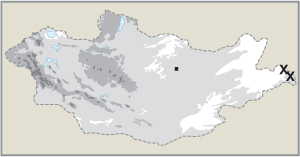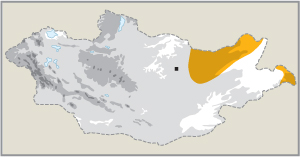
PLATE 67: WAXWINGS, BULBUL, DIPPER & WREN
Bohemian Waxwing Bombycilla garrulus
18–21 cm

ID Form and plumage pattern – especially prominent crest and broad bright yellow terminal tail-band – make this species impossible to confuse with any other Mongolian bird except the vagrant Japanese Waxwing, which see for distinctions. Voice Winter flocks very vocal; call is a sibilant high trilling sriiiiiii sriiiiiiiii. Slow-paced song combines similar trills with more grating sounds. Habitat Nests in coniferous and mixed forest, often near water. Wintering birds seek out berry-bearing trees both in rural areas and in towns. Behaviour Feeds on insects in breeding season, switching to fruit in autumn and winter. Irruptive, gregarious and semi-nomadic, with flocks from further north arriving in varying numbers to winter. Status Presumed very rare and local breeding visitor to Khangai, Hövsgöl and Hentii mountain ranges, and Ih Khyangan Mountain, though as yet nesting has not been documented. Also an irregular winter visitor in Great Lakes Depression and feeding in planted fruit trees in Uvs and Khovd among other towns across Mongolia.
Japanese Waxwing Bombycilla japonica
16–19 cm

ID Distinguished from very similar Bohemian Waxwing by slightly smaller size/lighter build; black eye-stripe extending back along edge of crest; bright red secondary bar in wings; and bright red (not yellow) terminal tail-band. Voice Call similar to that of Bohemian Waxwing but briefer and higher-pitched. Habitat Nests in coniferous forest, especially cedar and larch; migratory flocks visit fruit trees in winter. Behaviour Similar to Bohemian Waxwing. Status Vagrant. One adult photographed in Khalkh River valley, Dornod province, 2 June 2014. Also an unconfirmed record from the Nömrög River valley in 2002. Conservation Near Threatened globally due to small population size, habitat loss and persecution in cage bird trade.
Flavescent Bulbul Pycnonotus flavescens
20 cm

ID A slender, thrush-sized bird, mainly olive-green with grey, slightly crested head, streaked breast and upright posture. Unlikely to be confused with any other species in Mongolia. Imm is duller and browner with pale, not dark, bill. Voice Song has been described as ‘jolly and quick’: joi whiti-whiti-wit, etc. (Robson 2009); calls are various harsh buzzing notes. Habitat Open forest and forest edges. Behaviour Insectivorous; gleans branches and flycatches. Status Vagrant. One in planted poplar trees at Khanbogd, Ömnögobi province, 3 September 1978.
White-throated Dipper Cinclus cinclus
17–20 cm

ID Unmistakable due to its chunky form and generally dark brown coloration with sharply contrasting white throat and upper breast. Race C. c. leucogaster also has a white belly. Dark morph of C. c. baicalensis is reminiscent of extralimital Brown Dipper C. pallasii but throat and breast and paler. Always closely associated with water. Voice Call is a loud, metallic klink; also a short dzit; song a jumble of harsh squeaky and chirping notes as well as liquid warbles; sings even in winter. Habitat Breeds near rivers in high mountains, taiga forest and forest steppe. Winters at lower elevations, where it finds open water with abundant aquatic life. Behaviour A remarkable, entertaining, water-loving songbird that dives into fast-moving rivers in search of aquatic invertebrates. Walks underwater along the riverbed and often floats or swims on surface. Builds a domed nest on riverside rock ledges. Status Uncommon to fairly common resident breeder and winter visitor across Mongolia, from Mongol-Altai mountain range in the west through Hövsgöl, Khangai and Hentii ranges to the Nömrög River in the far east.
Eurasian Wren Troglodytes troglodytes
9–10 cm

ID Combination of tiny size, compact form, rich brown coloration, short, perennially cocked tail and hyperactivity is highly distinctive. However, compare Locustella, Cettia and Dusky Warblers. Voice Calls include a hard tac and chattering tec-tec-tec. Song is long, high-pitched and surprisingly loud, including trills and rapid ‘machine-gun’ rattles. Habitat Nests in mature forest with thick litter and undergrowth. Migrants forage in thickets near water. Behaviour Quite skulking, though often responds to pishing and squeaking noises. Forages for spiders and other invertebrate prey on ground and in low vegetation. Status Rare and local breeding visitor and passage migrant to Hentii range and Buir Lake-Khalkh River-Khyangan Region, late April to early September. [Alt: Northern Wren]